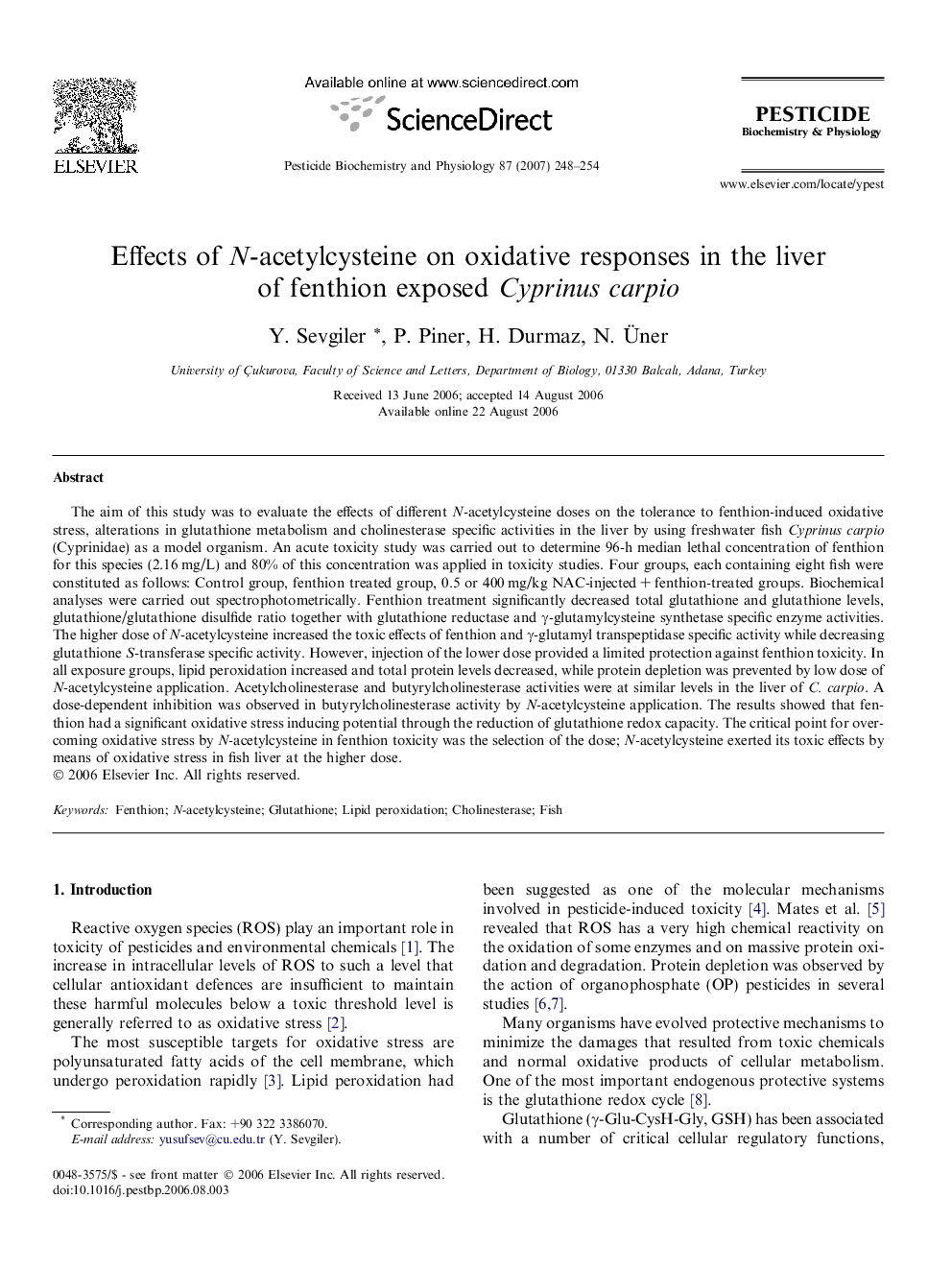| کد مقاله | کد نشریه | سال انتشار | مقاله انگلیسی | نسخه تمام متن |
|---|---|---|---|---|
| 2010138 | 1066714 | 2007 | 7 صفحه PDF | دانلود رایگان |

The aim of this study was to evaluate the effects of different N-acetylcysteine doses on the tolerance to fenthion-induced oxidative stress, alterations in glutathione metabolism and cholinesterase specific activities in the liver by using freshwater fish Cyprinus carpio (Cyprinidae) as a model organism. An acute toxicity study was carried out to determine 96-h median lethal concentration of fenthion for this species (2.16 mg/L) and 80% of this concentration was applied in toxicity studies. Four groups, each containing eight fish were constituted as follows: Control group, fenthion treated group, 0.5 or 400 mg/kg NAC-injected + fenthion-treated groups. Biochemical analyses were carried out spectrophotometrically. Fenthion treatment significantly decreased total glutathione and glutathione levels, glutathione/glutathione disulfide ratio together with glutathione reductase and γ-glutamylcysteine synthetase specific enzyme activities. The higher dose of N-acetylcysteine increased the toxic effects of fenthion and γ-glutamyl transpeptidase specific activity while decreasing glutathione S-transferase specific activity. However, injection of the lower dose provided a limited protection against fenthion toxicity. In all exposure groups, lipid peroxidation increased and total protein levels decreased, while protein depletion was prevented by low dose of N-acetylcysteine application. Acetylcholinesterase and butyrylcholinesterase activities were at similar levels in the liver of C. carpio. A dose-dependent inhibition was observed in butyrylcholinesterase activity by N-acetylcysteine application. The results showed that fenthion had a significant oxidative stress inducing potential through the reduction of glutathione redox capacity. The critical point for overcoming oxidative stress by N-acetylcysteine in fenthion toxicity was the selection of the dose; N-acetylcysteine exerted its toxic effects by means of oxidative stress in fish liver at the higher dose.
Journal: Pesticide Biochemistry and Physiology - Volume 87, Issue 3, March 2007, Pages 248–254